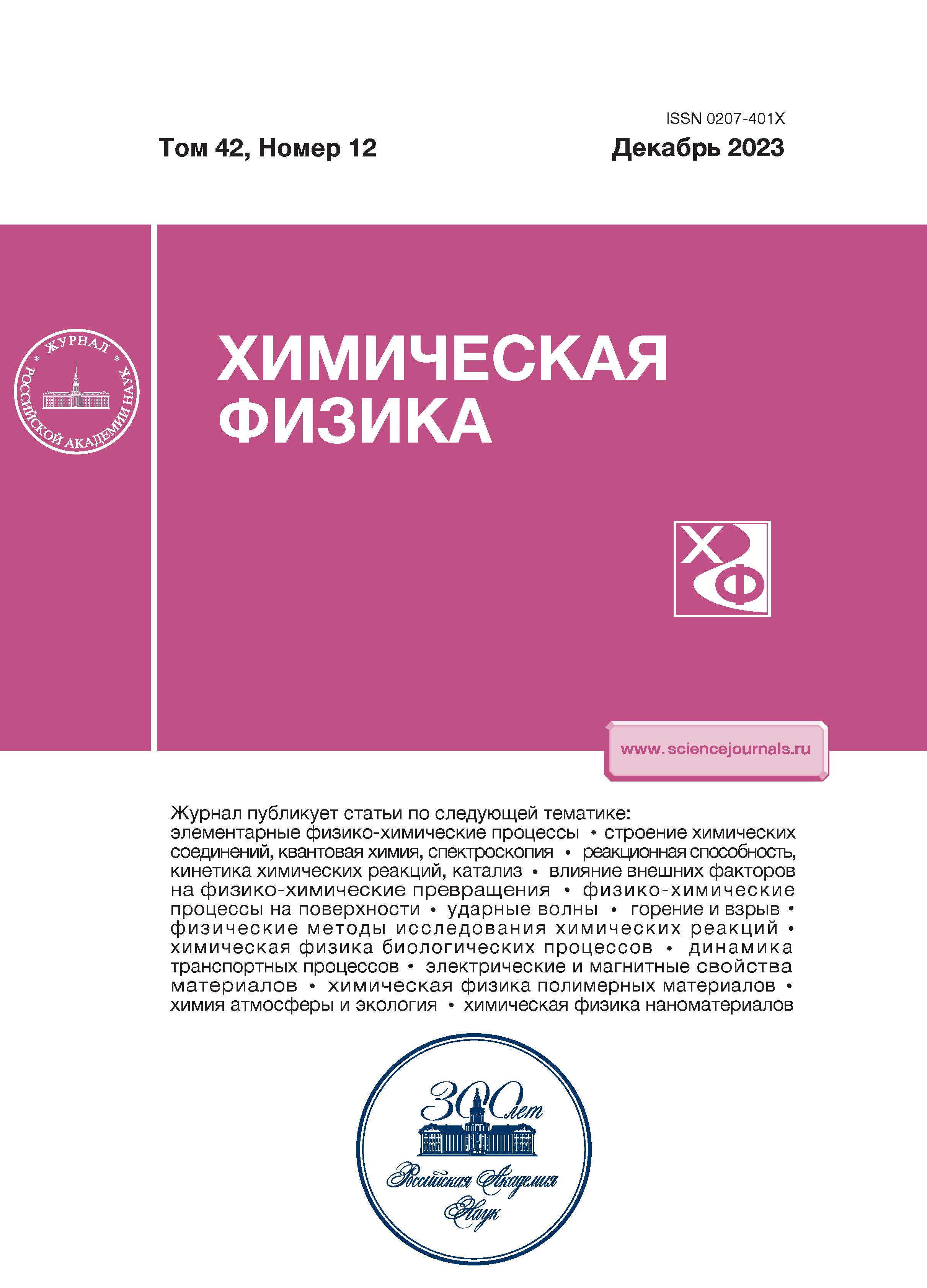Kinetics of the Decay of Excited Singlet State into a Pair of T-Excitons in Rubrene Films: Mechanism and Manifestation of Exciton Migration
- Authors: Shushin A.I.1, Umanskii S.Y.1, Chaikina Y.A.1
-
Affiliations:
- Federal Research Center for Chemical Physics, Russian Academy of Sciences
- Issue: Vol 42, No 12 (2023)
- Pages: 75-80
- Section: Chemical physics of nanomaterials
- URL: https://rjmseer.com/0207-401X/article/view/675015
- DOI: https://doi.org/10.31857/S0207401X23120105
- EDN: https://elibrary.ru/XTMPPU
- ID: 675015
Cite item
Abstract
The kinetics of the decay (splitting) of the excited singlet -state of rubrene molecules into a pair of
triplet-excitons (T-excitons) in rubrene films, usually represented in terms of the kinetics of the decay of fluorescence
(KDF) from the -state, is analyzed in detail. The KDF is known to be significantly controlled by
the process of diffusive migration and annihilation of the generated T-excitons. In the analysis, two migration
models are considered: the two-state model (TSM), treating the migration effect as a result of transitions
between the [TT] state of coupled T-excitons (at small TT-distances r) and the [T+T]-state of freely migrating
Е-excitons (at large distances r), as well as the free migration model (FMM), neglecting the effect of the [TT]
state. Within the TSM and FMM, the expressions for are derived, which are applied to describe the KDF ,
measured in amorphous rubrene films. Within the experimentally investigated range of times, , the TSM is
shown to reproduce the behavior of the experimental KDF much more accurately than the FMM. At longer
times a substantial difference () between and the FMM-predicted KDF is found, which is far beyond the
experimental error (3%).
Keywords
About the authors
A. I. Shushin
Federal Research Center for Chemical Physics, Russian Academy of Sciences
Email: shushin@chph.ras.ru
Moscow, Russia
S. Ya. Umanskii
Federal Research Center for Chemical Physics, Russian Academy of Sciences
Email: shushin@chph.ras.ru
Moscow, Russia
Yu. A. Chaikina
Federal Research Center for Chemical Physics, Russian Academy of Sciences
Author for correspondence.
Email: shushin@chph.ras.ru
Moscow, Russia
References
- Smith M.B., Michl J. // Annu. Rev. Phys. Chem. 2013. V. 64. P. 361; https://doi.org/10.1146/annurev-physchem-040412-110130
- Casanova D. // Chem. Rev. 2018. V. 118. P. 7164; https://doi.org/10.1021/acs.chemrev.7b00601
- Miyata K., Conrad-Burton F.S., Geyer F.L. et al. // Chem. Rev. 2019. V. 84. P. 4261; https://doi.org/10.1021/acs.chemrev.8b00572
- Merrifield R.E. // J. Chem. Phys. 1968. V. 48. P. 4318; https://doi.org/10.1063/1.1669777
- Suna A. // Phys. Rev. B. 1970. V. 1. P. 1716; https://doi.org/10.1103/PhysRevB.1.1716
- Konyaev S.N., Shushin A.I., Kolesnikova L.I. et al. // Phys. Stat. Sol. B. 1987. V. 142. P. 461.
- Tarasov V.V., Zoriniants G.E., Shushin A.I. et al. // Chem. Phys. Lett. 1997. V. 267. P. 58; https://doi.org/10.1016/S0009-2614(97)00056-0
- Ветчинкин А.С., Уманский С.Я., Чайкина Ю.А. и др. // Хим. физика. 2022. Т. 41. № 9. С. 72; https://doi.org/10.31857/S0207401X22090102
- Ryansnyanskiy A., Biaggio I. // Phys. Rev. B. 2011. V. 84. P. 193203; https://doi.org/10.1103/PhysRevB.84.193203
- Shushin A.I. // J. Chem. Phys. 2022. V. 156. P. 074703; https://doi.org/10.1063/5.0078158
- Piland G.B., Burdett J.J., Kurunthu D. et al. // J. Phys. Chem. C. 2013. V. 117. P. 1224; https://doi.org/10.1021/jp309286v
- Шушин А.И. // Хим. физика. 2017. Т. 36. № 11. С. 17; https://doi.org/10.7868/S0207401X17110085
- Pilland G.B., Burdett J.J., Dillon R.J. et al. // J. Phys. Chem. Lett. 2014. V. 5. P. 2312; https://doi.org/10.1021/jz500676c
- Shushin A.I. // Chem. Phys. Lett. 1985. V. 118. P. 197; https://doi.org/10.1016/0009-2614(85)85297-0
- Shushin A.I. // J. Chem. Phys. 1991. V. 95. P. 3657; https://doi.org/10.1063/1.460817
- Shushin A.I. // J. Chem. Phys. 1992. V. 97. P. 1954; https://doi.org/10.1063/1.463132
- Buchachenko A.L. // Rus. J. Phys. Chem. B. 2022. V. 16. P. 9; https://doi.org/10.1134/S1990793122010031
- Buchachenko A.L., Kuznetsov D.A. // Rus. J. Phys. Chem. B. 2021. V. 15. P. 1; https://doi.org/10.1134/S1990793121010024
- Лундин А.А., Зобов В.Е. // Хим. физика. 2021. Т. 40. № 9. С. 41; https://doi.org/10.31857/S0207401X21090077
- Shushin A.I. // Chem. Phys. Lett. 2017. V. 678. P. 283; https://doi.org/10.1016/j.cplett.2017.04.068












